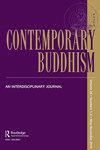‘NOT KNOWING IS MOST INTIMATE’: KOAN PRACTICE AND THE FOG OF WAR
IF 0.1
3区 哲学
0 PHILOSOPHY
引用次数: 1
Abstract
ABSTRACT The branch of international humanitarian law (IHL) pertaining to targeting is notoriously challenging for decision makers to apply in practice. The rules of distinction, precautions and proportionality in attack form the bedrock of targeting law, but compliance with these rules requires combatants to correctly understand what is happening in the battlespace. Those who decide upon, plan or execute an attack may not always have access to the right kind or amount of information needed to correctly set up an attack. Furthermore, they may not even know what information they need. Given the ambiguity posed by inadequate intelligence or information overload, how can combatants train themselves to successfully cut through the fog of war? In Japanese Zen (Chinese: Chan) Buddhism, adherents typically practice meditation methods featuring elements of open monitoring and focused attention. One style of focused attention, known as kōan practice, is often used by those in the Rinzai and (to a lesser extent) Sōtō schools of Zen. Kōans are short stories that Zen teachers use to communicate those Buddhist insights that cannot be expressed through direct communication, such as the experience of ‘nonduality’. Although kōans are often described as riddles or puzzles, they are not intended to be solved logically. Rather, the practitioner focuses their attention upon the kōan and observes what happens when linguistic and logical means of ‘solving’ it fall away. By training the mind to recognise its attachments to particular concepts or habitual ways of problem-solving, those who take up this practice in its proper context may find themselves better prepared to make decisions based on ambiguous information, and to spot errors in their perception or thinking when considering such matters of grave importance.不知道是最亲密的:KOAN实践与战争迷雾
摘要:众所周知,国际人道主义法中与目标有关的分支对决策者在实践中的应用具有挑战性。攻击中的区别、预防和相称规则构成了目标法的基石,但遵守这些规则需要战斗人员正确理解战场上发生的事情。那些决定、计划或执行攻击的人可能并不总是能够获得正确设置攻击所需的正确类型或数量的信息。此外,他们甚至可能不知道自己需要什么信息。鉴于情报不足或信息过载造成的模糊性,战斗人员如何训练自己成功地穿越战争迷雾?在日本禅宗(中文:Chan)中,信徒通常练习冥想方法,其特点是开放监控和集中注意力。一种被称为kōan修行的集中注意力的风格,经常被Rinzai和(在较小程度上)Sō。Kōans是禅宗老师用来传达那些无法通过直接沟通表达的佛教见解的短篇小说,比如“非性”的体验。尽管kōans经常被描述为谜语或谜题,但它们并不是为了从逻辑上解决。相反,实践者将注意力集中在kōan上,并观察当“解决”它的语言和逻辑手段失效时会发生什么。通过训练大脑识别其对特定概念的依恋或解决问题的习惯方式,那些在适当的背景下从事这一实践的人可能会发现自己已经做好了更好的准备,能够根据模糊的信息做出决定,并在考虑这些重要问题时发现他们的感知或思维中的错误。
本文章由计算机程序翻译,如有差异,请以英文原文为准。
求助全文
约1分钟内获得全文
求助全文

 求助内容:
求助内容: 应助结果提醒方式:
应助结果提醒方式:


